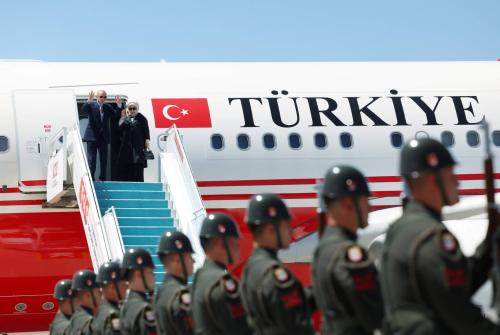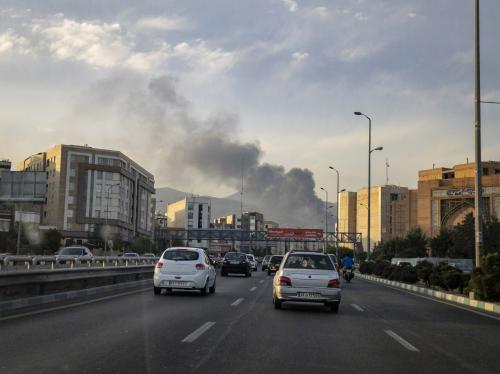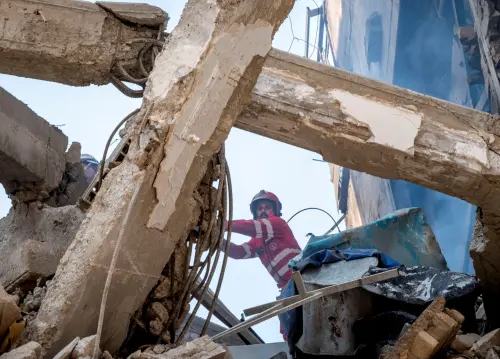President Barack Obama announced Friday that American and Russian negotiators in Geneva have agreed on a new treaty to replace the expired Strategic Arms Reduction Treaty (START). He and President Medvedev are due to sign it Apr. 8 in Prague.
The new treaty requires ratification by the Senate, as well as by the Russian Duma. Senators should closely review the agreement, for it affects issues at the core of U.S. security.
To merit ratification, the treaty must answer “yes” to three key questions: Will it enhance U.S. security? Will it allow the United States to maintain an effective nuclear deterrent? Can it be verified?
We believe the treaty does all this. Let’s look at these questions.
Will the treaty enhance U.S. security? It limits each side to no more than 1550 strategic warheads. The treaty has separate limits of 800 deployed intercontinental ballistic missile launchers, submarine-launched ballistic missile launchers and heavy bombers equipped for nuclear armaments. No more than 700 may be deployed at any one time.
These compare to START limits of 6,000 nuclear warheads on 1,600 launchers. The new treaty will cut the current number of Russian strategic weapons that could target the United States by 30-40 percent.
That’s a good thing. Russia does not pose the kind of nuclear threat that the Soviet Union did during the Cold War, but the safety and security of Americans will be improved when the nuclear potential of our nearest peer competitor is reduced.
Moreover, by capping Russian strategic forces for the next decade, the agreement will make the U.S.-Russian nuclear relationship more predictable.
That’s also a good thing. Washington will know more about Russian nuclear forces with the treaty than without it. So it will be able to make smarter decisions when it decides how to allocate defense dollars between strategic forces and other pressing military needs.
Obama has embraced the idea of a world free of nuclear weapons. But he has also made clear that, until then, the United States must maintain an effective nuclear deterrent — one able to protect America and its allies.
This brings us to the second key question: Will the new treaty allow the United States to maintain an effective deterrent?
We believe the answer will be yes. Fifteen hundred and fifty deployed strategic warheads represent a substantial force. It will be equal to that of Russia, and many times the size of the nuclear arsenal of any third country.
In addition, the launcher limits should allow the United States to maintain much of its current force structure – its strategic missiles and bombers. That means the deterrent will remain survivable, robust and agile – fully underpinning U.S. and allied security.
The third question is: Can the treaty can be adequately verified.
Some have expressed concern that the new treaty may contain less in the way of verification than START. Indeed, the presidents agreed last July that, where possible, they would streamline and simplify START’s monitoring provisions.
But asking whether the new treaty contains more or less verification is the wrong question. The right one is: Do the verification measures give Washington high confidence that it could detect a militarily significant violation in time to respond before its security is jeopardized?
We believe the verification measures can do this. An extra measure of transparency into Russian forces would certainly be welcome, but the verification measures should be determined by the treaty’s specific limits and the need to verify those limits.
In addition to answering these questions, a signed treaty should yield other benefits. By demonstrating U.S. commitment to reduce its nuclear forces, it bolsters Washington’s credibility as it seeks to strengthen the Non-Proliferation Treaty (NPT) regime at the NPT review conference in May.
A new agreement will not convince North Korea or Iran to abandon their nuclear weapons programs. But it should increase the chances for a successful conference that puts greater impediments on the proliferation path that other nuclear aspirants might seek to follow.
Concluding the treaty should give a boost to the U.S.-Russia relationship. That may help secure greater cooperation from Moscow on challenges such as frustrating Iran’s nuclear ambitions.
Once signed and submitted, the new treaty can expect close scrutiny by the Senate. Since the agreement affects vital U.S. security interests, it should receive nothing less.
A final judgment will have to wait until we see the detailed treaty provisions. But based on what we know to date, the treaty will deserve to pass the merit test in the Senate.
Strobe Talbott, the president of The Brookings Institution, served as Deputy Secretary of State during the Clinton administration. Steven Pifer, the director of Brookings’ Arms Control Initiative, served as U.S. ambassador to Ukraine.
The Brookings Institution is committed to quality, independence, and impact.
We are supported by a diverse array of funders. In line with our values and policies, each Brookings publication represents the sole views of its author(s).



Commentary
Op-edJudging the New START Treaty
March 29, 2010